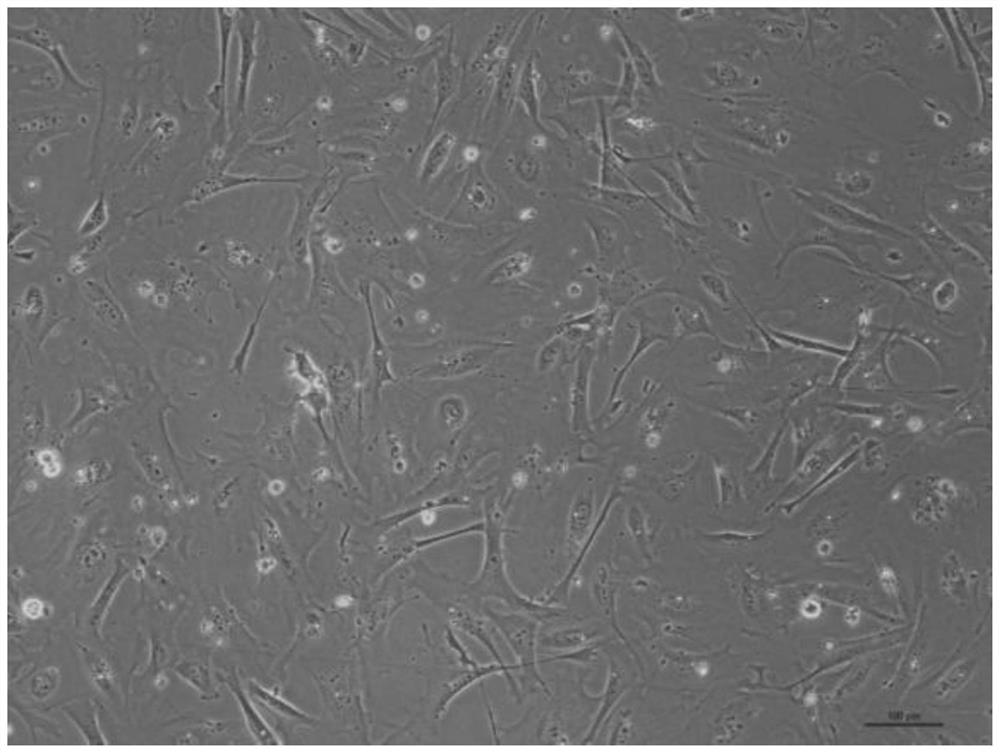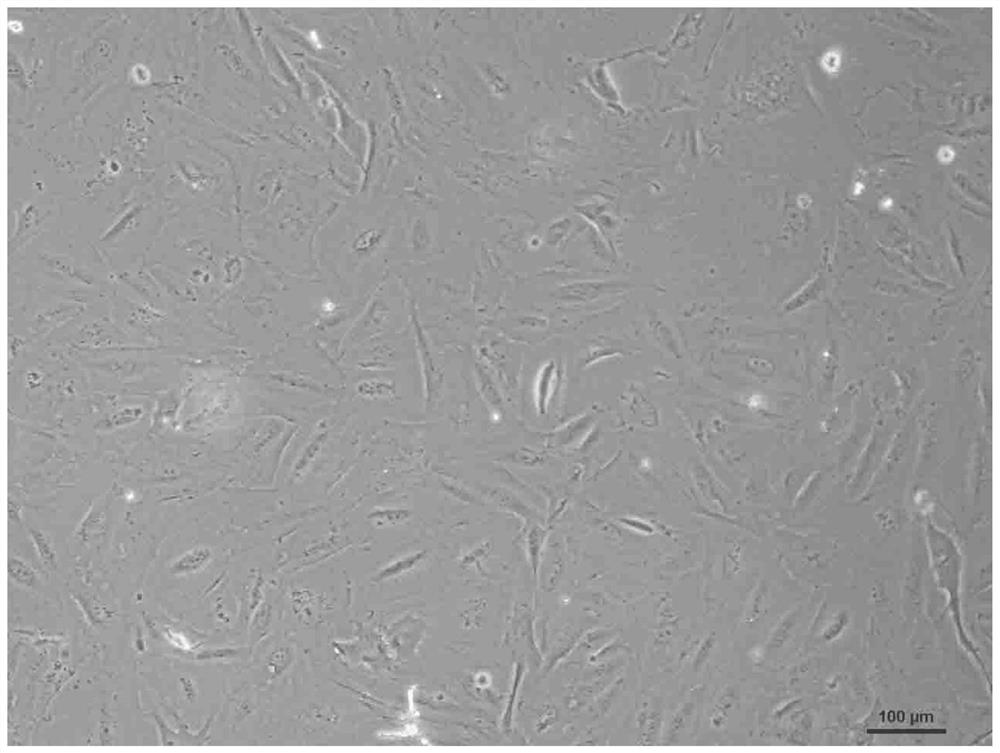Sturgeon embryonic cell line, culture medium and preparation method of culture medium
A technology of embryonic cells and culture methods, applied in the culture medium and its preparation, and the field of sturgeon embryonic cell lines, which can solve the problems of difficult establishment of sturgeon embryonic cell lines, extremely difficult to distinguish embryo body and yolk, and inability to transfer embryos, etc. Achieve the effect of vigorous proliferation in vitro, easy operation, and good growth and division state
- Summary
- Abstract
- Description
- Claims
- Application Information
AI Technical Summary
Problems solved by technology
Method used
Image
Examples
Embodiment 1
[0040] Example 1: Establishment of Yangtze River Acipenser Embryo Cell Line
[0041] Follow the steps below to establish the Changjiang sturgeon embryonic cell line
[0042](1) Removal of egg membrane and egg shell: collect 15 fertilized eggs of Yangtze River sturgeon hatched for 48-96 hours, add 20ml PBS to wash 4 times, then transfer to a cell culture dish, use ophthalmic surgical forceps to peel off the outer layer of egg membrane, and then wash with 75 The egg shells (including the contents) were washed with % alcohol for 4 times, and then washed with sterile PBS for 4 times. Transfer the non-coated sturgeon eggs to a new sterile petri dish, use ophthalmic surgical forceps to peel off the egg shells, and release the contents;
[0043] (2) Separation of embryo body and yolk: Add 5ml of antibiotic-containing PBS washing solution to the container containing the embryo body and yolk in the previous step, and set the rotation speed through a horizontal shaker (or a hand-held p...
Embodiment 2
[0054] Implementation 2: Morphological Observation of Changjiang Acipenser Embryo Cell Line
[0055] The morphology of the primary cells and the 17th passage cells was compared and observed by an inverted microscope. Cells with a confluence of 80% to 90% were taken for observation, primary cells ( figure 1 ) contains cells of various shapes, most of which are fibrous and polygonal. 17 passage cells ( figure 2 ) was the same as the primary one, and the cells were mainly fibroblasts and polygonal cells.
Embodiment 3
[0056] Embodiment 3: verification of resuscitated vitality of Changjiang sturgeon embryonic cell line
[0057] (1) Take out the frozen Yangtze River sturgeon embryo cells from liquid nitrogen, and shake them quickly in warm water at 37°C to melt the cells as soon as possible. cell.
[0058] (2) Centrifuge at 1000 rpm for 5 minutes. Discard the supernatant, add culture medium to resuspend the cells, stain with trypan blue, and count using an inverted microscope. Cells stained blue are dead cells, and cells that are not stained are live cells. Cell viability was calculated after counting. The results in Table 1 show that the viability of the cells after recovery was above 70%.
[0059] Table 1 Comparison of the viability of different generations of cells before cryopreservation and after recovery
[0060] Frozen cell passage Viability before cryopreservation post-resuscitative vitality P5 98% 75% P12 97% 81% P15 98% 77% P17 98% 84% ...
PUM
 Login to View More
Login to View More Abstract
Description
Claims
Application Information
 Login to View More
Login to View More - R&D
- Intellectual Property
- Life Sciences
- Materials
- Tech Scout
- Unparalleled Data Quality
- Higher Quality Content
- 60% Fewer Hallucinations
Browse by: Latest US Patents, China's latest patents, Technical Efficacy Thesaurus, Application Domain, Technology Topic, Popular Technical Reports.
© 2025 PatSnap. All rights reserved.Legal|Privacy policy|Modern Slavery Act Transparency Statement|Sitemap|About US| Contact US: help@patsnap.com



